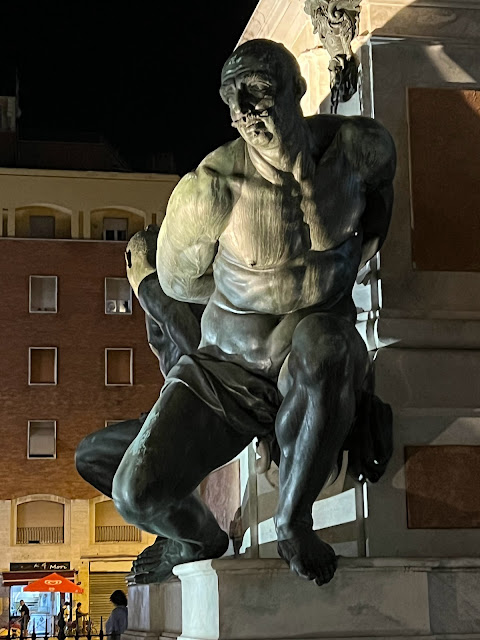 |
| Small villages cling to steep slopes in northeast Corsica. 80% of the island is mountains. |
The first leg of our Italian-French islands tour finished today as we travelled to Bastia and from there to Livorno on mainland Italy. Just as a side issue of interest, the land we were traveling north through was once referred to as the 'Chestnut' civilisation. In the early C16, there were extensive reports of the cultivation of chestnuts in the area. Two centuries later in the early 1800s it was estimated that Corsica had well over 30,000 hectares of chestnut trees, which in the following decades would reach approximately 35,000 hectares. The predominance of this crop determined the development of the land, the construction of production buildings (mills, drying rooms), and included the structuring of the housing, organised around the hall or sala. A little over a century later the traditional activities declined, but the industry offered a new product - gallic acid, which was used by factories producing tannin for manufacturing leather. Today the industry seems to have disappeared leaving historians to wonder at it and the impact it had on the land.
 |
| Heading for Livorno, Italy |
From Bastia we boarded a very clunky ferry where we had to haul our luggage up many stairs (whatever they are called on boats!). Eventually we arrived in Livorno and stood waiting at the port for at least an hour before a taxi arrived to ferry us and another couple to our hotel. Our check-in was hilarious - in hindsight. After 30 mins searching they could find no record of our booking so I had to pay again (no big deal we could claim it back later). Once in our room 15 mins later however we got a phone call from a very embarrassed hotel clerk saying he had found the booking - under ‘Erica Grano’. My name had been automatically translated into Italian – Heather Wheat! Poor chap was so embarrassed.
We had a very late dinner that night in the Piazza Giuseppe Micheli with Vespas and wee Renaults whizzing by. Before heading back to our hotel we wandered around a quite impressive square looking at magnificent monuments. The one that particularly impressed us was the Monument of the Four Moors which is quite troubling to look at. This statue represents the supreme conqueror surrounded at the base with four bronzes variously described as moorish slavers, or representing the four corners of the world, but overall a depiction of suffering. Talking of suffering we finally collapsing into bed. It had been a long day.
 |
| Monument of the Four Moors |







No comments:
Post a Comment